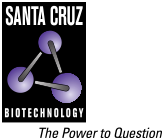
Click on image or enlarge button to enlarge

HLA-D/DR/DQ Antibody (35): sc-53305
- HLA-D/DR/DQ Antibody (35) is a mouse monoclonal IgG3 κ HLA-D/DR/DQ antibody, cited in 1 publications, provided at 200 µg/ml
- raised against tumor fragments of mouse origin
- recommended for detection of HLA-D, HLA-DR and HLA-DQ of human origin by IP, IF and FCM
- available conjugated to either phycoerythrin or FITC for IF, IHC(P) and FCM
- Contact our Technical Service Department (or your local Distributor) for more information on how to receive a FREE 10 µg sample of HLA-D/DR/DQ (35): sc-53305.
- At present, we have not yet completed the identification of the preferred secondary detection reagent(s) for HLA-D/DR/DQ Antibody (35). This work is in progress.
HLA-D/DR/DQ Antibody (35) is an IgG3 κ mouse monoclonal HLA-D/DR/DQ antibody (also designated HLA class II HLAD / HLADR / HLADQ antibody, major histocompatibility complex (MHC) class II (33-35 kDa α)/(26-28 kDa β) heterodimer cell surface receptor antibody, chromosome 6p21 gene complex class 2 D/DR/DQ antibody, or Human Leukocyte Antigen – D/DR/DQ isotypes antibody) that detects the HLA-D/DR/DQ protein of human origin by IP, IF and FCM. HLA-D/DR/DQ Antibody (35) is available as both the non-conjugated anti-HLA-D/DR/DQ antibody form, as well as multiple conjugated forms of anti-HLA-D/DR/DQ antibody, including PE, FITC. Major histocompatibility complex (MHC) class II molecules destined for presentation to CD4+ helper T-cells is determined by two key events. These events include the dissociation of class II-associated invariant chain peptides (CLIP) from an antigen binding groove in mhc ii-a/b dimers through the activity of MHC molecules HLA-DM and -DO, and subsequent peptide antigen binding. Accumulating in endosomal/lysosomal compartments and on the surface of B cells, HLA-DM, -DO molecules regulate the dissociation of CLIP and the subsequent binding of exogenous peptides to HLA class II molecules (HLA-DR, DQ, DP and DR) by sustaining a conformation that favors peptide exchange. RFLP analysis of HLA-DM genes from rheumatoid arthritis (RA) patients suggests that certain polymorphisms are genetic factors for RA susceptibility. The alpha 1 chain of HLA-DQ1 class II molecule (Ia antigen) complex can bind peptides and present them to CD4+ T lymphocytes.
Alexa Fluor® is a trademark of Molecular Probes Inc., OR., USA
LI-COR® and Odyssey® are registered trademarks of LI-COR Biosciences
References:
- HLA-DMA and HLA-DMB alleles in German patients with type 1 diabetes mellitus. | Siegmund, T., et al. 1999. Tissue Antigens. 54: 291-4. PMID: 10519369
- The association of HLA-DM genes with rheumatoid arthritis in Eastern France. | Toussirot, E., et al. 2000. Hum Immunol. 61: 303-8. PMID: 10689120
- Functional HLA-DM on the surface of B cells and immature dendritic cells. | Arndt, SO., et al. 2000. EMBO J. 19: 1241-51. PMID: 10716924
- Functional characterization of a lysosomal sorting motif in the cytoplasmic tail of HLA-DObeta. | Brunet, A., et al. 2000. J Biol Chem. 275: 37062-71. PMID: 10964920
- The down-regulation of HLA-DM gene expression in rheumatoid arthritis is not related to their promoter polymorphism. | Louis-Plence, P., et al. 2000. J Immunol. 165: 4861-9. PMID: 11046010
- Determination of the HLA-DM interaction site on HLA-DR molecules. | Doebele, RC., et al. 2000. Immunity. 13: 517-27. PMID: 11070170
- Association of colorectal tumor epithelium expressing HLA-D/DR with CD8-positive T-cells and mononuclear phagocytes. | Allen, CA. and Hogg, N. 1987. Cancer Res. 47: 2919-23. PMID: 3105871
- A role for HLA-DO as a co-chaperone of HLA-DM in peptide loading of MHC class II molecules. | Kropshofer, H., et al. 1998. EMBO J. 17: 2971-81. PMID: 9606180
Ordering Information
| Product Name | Catalog # | UNIT | Price | Qty | FAVORITES | |
HLA-D/DR/DQ Antibody (35) | sc-53305 | 200 µg/ml | $310.00 | |||
HLA-D/DR/DQ Antibody (35) FITC | sc-53305 FITC | 200 µg/ml | $324.00 | |||
HLA-D/DR/DQ Antibody (35) PE | sc-53305 PE | 200 µg/ml | $337.00 |
